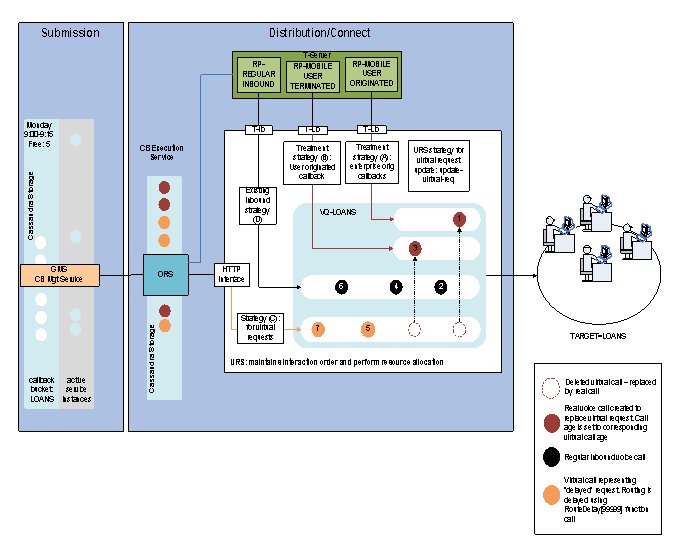Call Back Processing
Please review this page.
A call back request goes through the following stages of processing during its lifecycle:
Submission
GMS manages this stage of the processing, and it consists of two parts:
- Validation/Triage - The call back request will be validated (the parameters are good and that it can be processed appropriately). It is then determined, based on call back request parameters, if the request is handed off to the scheduling process or the active pending process. This decision is based on the desired time for the call back, the current time, and the estimated wait time (EWT) for the desired queue.
- Scheduling – The request is placed into the appropriate queue. There is a queue for each desired target group. This process then determines when to move the request to the active pending process.
Distribution
ORS/URS manages this stage of the processing. The request is placed into a queue as a virtual call. These queues are managed by URS (that is, URS virtual queues). There will be a queue per desired target group. There is a one-to-one mapping to the scheduling queues. Once the request reaches a certain point in the call, the actual call will be initiated and the request will move to the active process. Note that the same queues will be used to manage both the virtual calls used to represent the request as well as the real call when started. It will also potentially have other inbound calls.
Connect
ORS/URS manages this stage of the processing. The real call will be initiated and will replace the associated virtual call in the same queue for the request and will result in completing the call back request lifecycle by having the call connected to selected agent.
The following diagram illustrates the processing stages:

